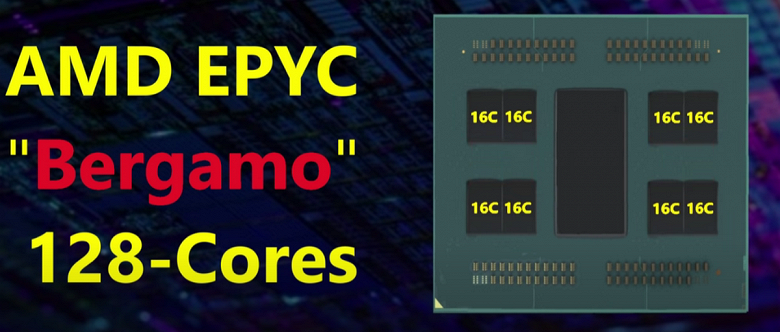Intel Alder Lake processors are already on sale today and will be the first mass consumer heterogeneous x86-compatible CPUs. Will AMD go the same way?
We have already heard information about small Zen 4D cores, which will allow AMD to create its own heterogeneous processors. The details have now emerged. According to them, the small Zen 4D core will be obtained by simplifying the regular core on the Zen 4 architecture. In particular, AMD will reduce the cache memory and lower frequencies. Recall that Alder Lake has small cores built on a different architecture from large ones.

AMD’s approach is likely to enable the company to reduce development costs and deliver solutions earlier.
The first new cores can be tried on not by Ryzen consumer CPUs, but by Epyc server generations of Bergamo. Moreover, the source claims that these processors will consist exclusively of Zen 4D cores, but the top CPUs will have 128 of them. Then Ryzen processors may come out, where there will be 32 Zen 4D cores.
That is, for a while, Zen 4D cores will replace Zen 4, despite the simplifications. But when the Zen 5 architecture hits the market, Zen 4D cores relative to Zen 5 will be used in heterogeneous CPUs exactly as small cores.
At the same time, it is likely that Zen 4D cores will retain support for SMT multi-threading, which the small cores of Intel processors cannot boast of.
The author also adds that the Zen 5 architecture will provide huge performance gains. The indicator of the number of instructions executed per clock cycle (ICP) will grow by 20-40%.
.
Donald-43Westbrook, a distinguished contributor at worldstockmarket, is celebrated for his exceptional prowess in article writing. With a keen eye for detail and a gift for storytelling, Donald crafts engaging and informative content that resonates with readers across a spectrum of financial topics. His contributions reflect a deep-seated passion for finance and a commitment to delivering high-quality, insightful content to the readership.






